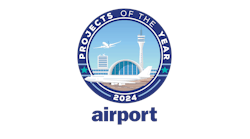Time to Reorganize – Why U.S. Airports Need to Adapt their Organizations to Meet Industry Changes
All successful businesses need to regularly review and adapt their organization structures to address evolving opportunities and challenges. The U.S. airport industry is no exception – especially now. Unprecedented structural changes currently face American airports, including capital program funding, erosion of primary revenue sources such as airport parking, and new emphasis on managing the end-to-end customer experience. These changes place new demands on airport organizations and require new organizational solutions to ensure that management and staff are positioned effectively to address new priorities. But adapting complex organizations, while maintaining business momentum and staff engagement, requires experience, insight and specialized expertise.
Organizational Design is Critical to Improving Airport Performance
Airport performance is ultimately about people performance. No matter how much airports invest in infrastructure and technology, the value that these investments deliver to the business and the customer is directly a function of the capability of the airport’s staff. But critically, their ability to work effectively together, to deploy their individual skills towards collective ends, and to forge and sustain a culture of success is directly dependent on how they are organized.
As with any business, optimizing airport performance starts with shaping the structure to support the achievement of the organization’s most important priorities. Achieving key outcomes in dynamic, customer-focused businesses such as airports necessarily requires regular organizational adaptation. Just because an organization structure has met historical needs does not mean that it is equipped to meet future needs – in fact, it is almost certainly not. That said, changing organizational structures is difficult and sensitive. It is always easier to stick with the status quo and it is always possible to find reasons to put off the change until later. However, if the business plan changes and the organizational model does not support the change, then the plan is very likely to fail.
When designing organizational change, it is often tempting to plan the change around the individual managers in place today – but this inevitably results in a suboptimal design and the risk of underperformance. For example, to avoid offending key managers, individuals may be allowed to retain parts of their portfolio that would fit better elsewhere - risking ambiguity and overlap of responsibilities with other managers. It’s better to design the organization around a series of sound principles, such as strategic alignment and single point responsibility, and then fit the people to the positions at a later stage.
Industry Change Requires Airport Organizations to Adapt and Reinvent
Changes facing the airport industry, including technological development, changes in the airline industry and changes in customer expectations all have direct implications for airport organizations and their management structures.
For example, pressure from airport stakeholders to improve end-to-end passenger experience requires not only better facilities but also requires process improvements, technological innovations, and a more service-oriented culture. To respond to these changes, airport organizations need to transition from their traditional “landlord” orientation to a new customer-centric focus, where the airport takes leadership responsibility for establishing a “brand”, and enforcing service standards to be delivered by all airport service providers. Often, a fundamental shift in organizational culture needs to take place across airport departments and operations.
Other airport industry changes also have an organizational impact, for example:
- Increased competition for air service following airline consolidation and rationalization of route networks requires new and creative approaches to airline business relationships
- Major investment in physical infrastructure in order to accommodate unprecedented growth in an environment of declining federal support requires new approaches to funding, managing and delivering capital programs
- An ever-greater emphasis on security, including initiatives such as protecting against insider threats, is broadening the scale of the airport’s security mandate
- Disruption of traditional airport revenue sources, such as the decline in airport parking and rental car revenues as a result of TNCs and car sharing, requires new thinking, programs and management capabilities to sustain the financial strength of the airport enterprise.
All of these trends have direct organizational implications. As such, the challenge for airports lies in determining how best to adapt, and in some cases to re-invent, their organizations in order to address these implications – all while maintaining positive performance.
Organizational Design Should be Based on Consistent Principles
First, rather than making changes piecemeal, it is important to design organizations based on a consistent set of principles. Not only will this result in a more robust, effective organization, it will also promote better communication by providing a clear rationale for the change. The five most important principles are:
- Structure follows strategy – The first step is to ensure that the organization has clearly defined its strategy and goals. The structure should then be designed to align with the organization’s strategy and facilitate delivery of its goals. For example, once the key success drivers of the organization have been established (typically their primary strategic goals), the structure should include senior-level leadership for each of these success drivers. If improving passenger experience is a strategic goal then it needs senior representation in the organization structure.
- Objective, evidence-based approach – It is tempting to approach design by progressively making incremental changes to the structure, but this risks perpetuating existing flaws or making things worse with complex workarounds. When major change is required, it is usually better to look holistically at the entire organization and create a clean new design from first principles. The initial designs can be created without names against positions to avoid the dangers of designing around individuals.
- Single point responsibility – Closely linked responsibilities must be grouped under a single major function, led by a single accountable executive. This may seem obvious, but we see many instances of duplication or overlapping of responsibilities among different managers, or where responsibilities for linked functions are split (for example, different aspects of maintenance reporting to different functional heads). Single point responsibility results in greater clarity and agility, enabling more effective responses in situations requiring rapid and clear decision-making.
- Efficiency of management structure – Flatter organizations, which minimize unnecessary management layers, deliver greater organizational efficiency up to a point; however, spans of managerial control need to be reasonable to avoid overburdening managers and slowing down decision-making. The optimal span of control depends on various factors – for example operational functions typically benefit from larger spans than more technical functions, such as finance in which managers are heavily involved in technical analysis.
- Capability to manage future demands – As the business changes and new challenges arise, additional capabilities may be required.
Once the management structure has been established, the next step is to determine staffing levels required in each function. In this case, a key principle is to start by identifying the goals for each function, and the activities required to deliver the goals. Optimal staffing levels can then be determined through a series of questions, including:
- Which activities are essential and which are discretionary?
- What are the drivers of workload (e.g. size of facility, passenger volumes, capital program size) for each activity, and how will these drivers change over time)?
- What opportunities are there for efficiency improvement (e.g. use of technology, outsourcing, work scheduling changes, etc.)?
Another key principle throughout organizational redesign is that it is invariably preferable to construct and test solutions collaboratively with key managers. This helps to develop consensus and to identify difficult issues early in the process. However, managers affected may be guarded or less than candid – it is therefore important to stress confidentiality throughout the process. Similarly, managers may be excessively focused on existing individuals and personalities, sometimes seeking to protect others or maintain the status quo. This can be diffused by focusing the discussion on positions and role requirements rather than individuals.
Theory into Practice
While the above points may sound somewhat theoretical, they form the foundation of any effective organizational redesign. Two examples of how airport organizations need to adapt to new strategic priorities are outlined below:
Organizing to upgrade the airport passenger experience
Traditionally investment in the customer experience at US airports has been limited to support from operations staff and volunteers, who assist with queueing, wayfinding and other passenger needs. Customer service has typically been seen as an airline and tenant responsibility, resulting in airport customer staff being buried deep within the organization. As customer service is increasingly elevated to a primary strategic priority, airports are beginning to establish “C-Suite” positions to lead the charge.
For example, Los Angeles World Airports has a director-level position leading guest experience and innovation programs. Meanwhile, Seattle-Tacoma International Airport has a director of customer experience and branding, and San Diego County Regional Airport Authority has appointed a chief revenue officer whose responsibilities include customer experience, marketing and revenue optimization. The organizational response to new priorities goes beyond individual appointments, however. In each of these cases, new leadership has been complemented by wider organizational redesign to ensure that new positions are effectively coordinated with the rest of the organization, that new support functions such as analytics are provided, and that the “softer” aspects of staff training and culture change are also addressed.
Organizing to manage and deliver capital programs
Historic and project growth in US passenger traffic has created a “bow wave” of infrastructure development as most US airports scramble to deliver new infrastructure to accommodate demand. In this context, historical infrastructure financing and delivery models are increasingly out of step with evolving realities, and alternative program delivery models are finding broader airport industry applicability.
It’s important to note that managing capital programs with new delivery models makes new demands on airport organization structures and staff capabilities. Organizational planning must address questions with inevitably complex answers – including how much to insource versus outsource, how to address the general shortage of skilled program managers, construction managers and specialist engineers with relevant experience, and how to balance the risk of overdependence on consultants against the risk of overstaffing after the peak.
Major projects relying on P3 delivery approaches raise other organizational implications and may, for example, require new skills in the Finance and Development functions. Further, they may require creation of separate organizational groupings to manage discrete infrastructure programs with unique characteristics. The establishment of the Landside Access Modernization Program (LAMP) team by LAWA is a good example of an organizational unit expressly designed to manage and coordinate delivery of a complex program with both facility-wide and organization-wide impacts.
Achieving Benefits, Avoiding Unwanted Outcomes
It is sometimes said that planning and implementing organizational redesign is like brain surgery for an organization. Its benefits can be transformative, but its consequences can be profound, resulting in unwanted outcomes unless expertly performed. But, again like brain surgery, the consequences of not doing it can also be significant. With our industry in transition, it is timely for airports to review their organizations in order to ensure that they are structured for success both now and in the future. In doing so, it is prudent to adopt a systematic and expert-led approach to ensure that transformative benefits are achieved, and unwanted outcomes avoided.
Richard Batty has more than 25 years of consulting and management experience in the airport and wider transportation industries. He also has extensive experience in strategic planning and organizational development in a wide range of public and private sector businesses operating in competitive environments.
Mr. Batty has participated in strategic planning processes for Los Angeles World Airports (LAWA) and Massport and led organizational development and strategic planning processes for the Ports of Houston and Corpus Christi. He was the project manager for a review of organizational effectiveness and efficiency for HAS and led detailed reviews of the HAS maintenance and airport police functions.
Nick Davidson has more than 30 years of experience with airport governance, strategic planning, organizational development, and performance improvement and has pioneered efficient airport strategic planning processes that can transform organizational effectiveness.
Mr. Davidson has worked closely with the State of Hawaii, Los Angeles World Airports (LAWA), and the Ports of Houston and Corpus Christi to facilitate development of staff-led strategic plans. He has also completed a broad review of organization structure, staffing, and process efficiency for the Houston Airport System (HAS) and completed similar reviews for Newark Liberty International and Hartsfield-Jackson Atlanta International Airport.







